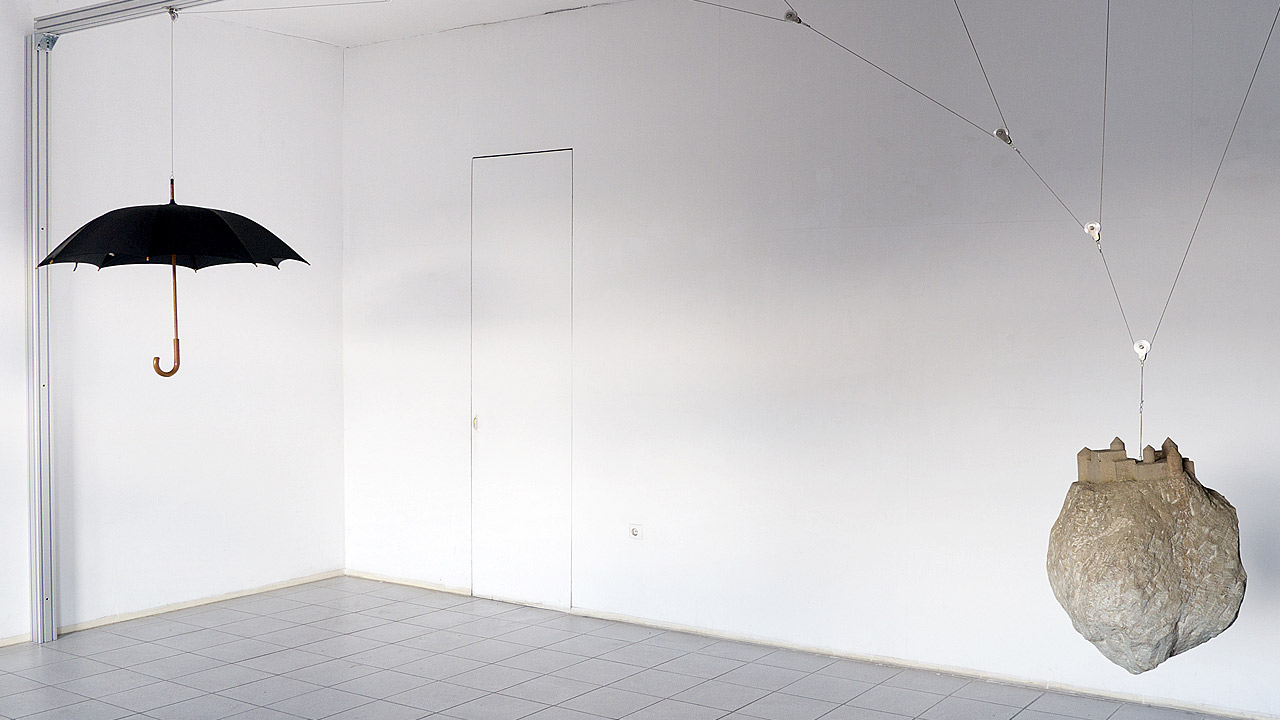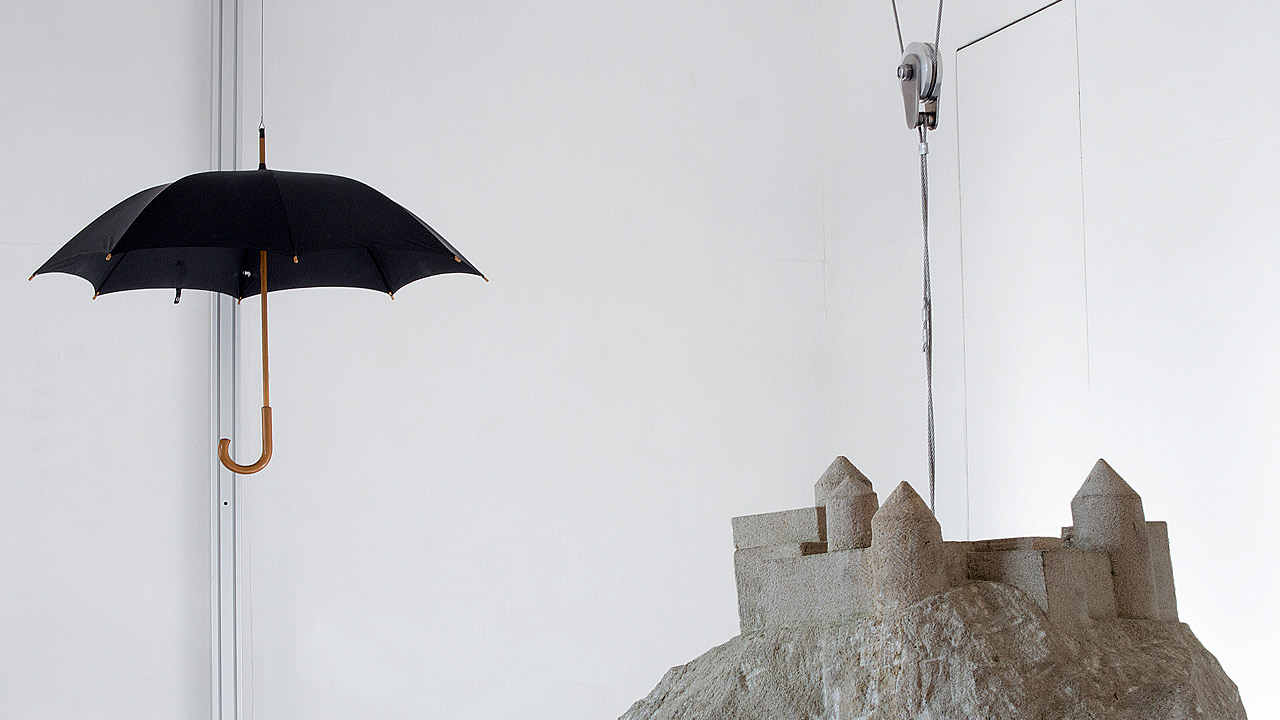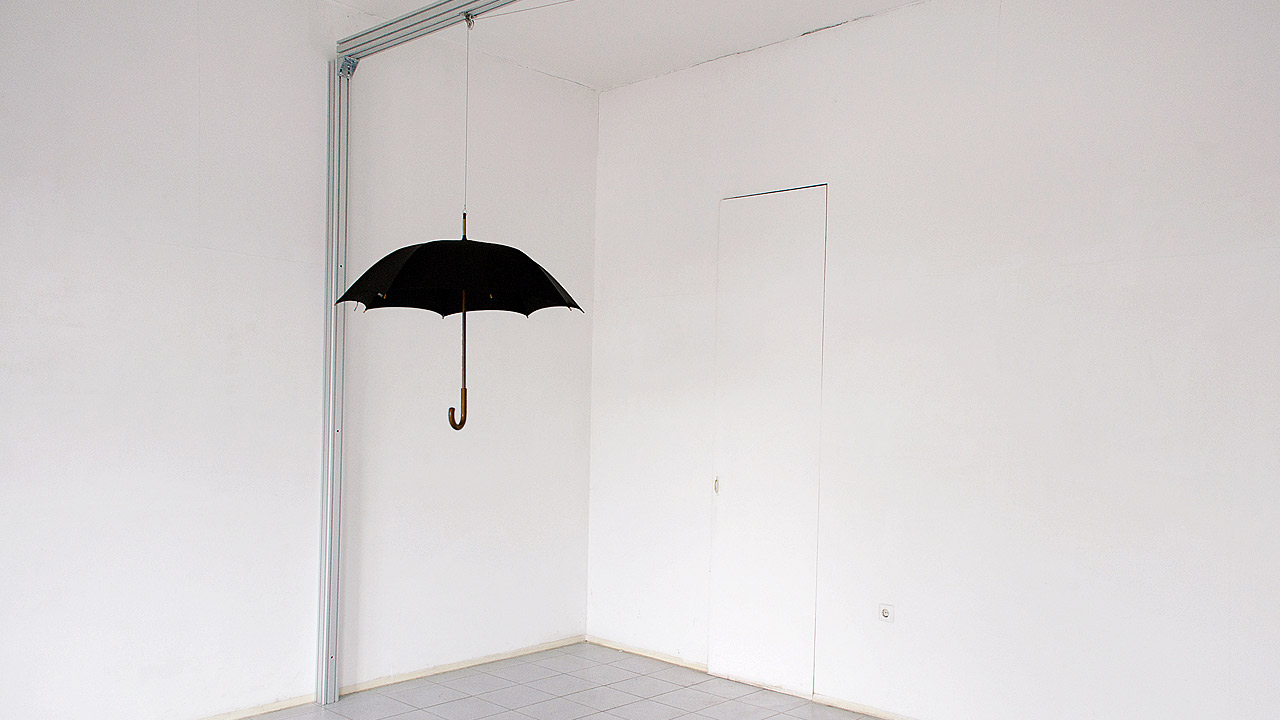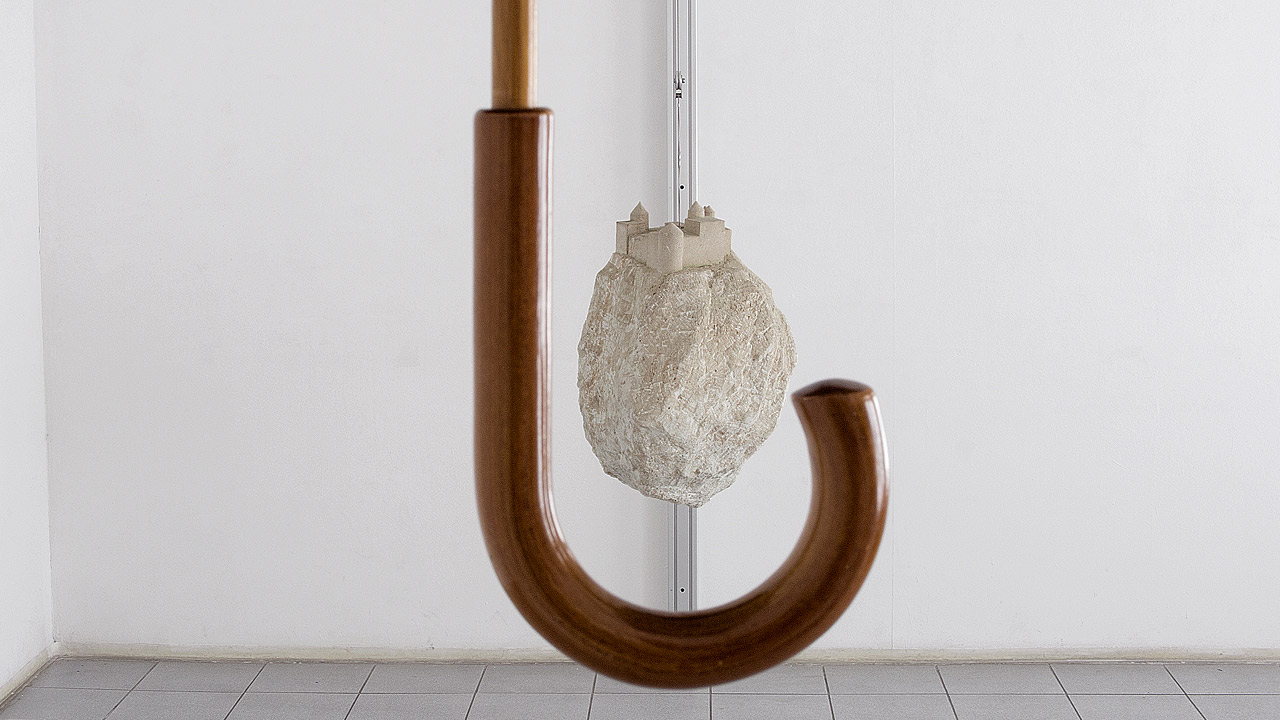Holiday in the Pyrenees
Genre: kinetic installation
Date: 2014
Size: ~ 600 x 100 x 300 cm
Materials: umbrella, stone, pulley system, steel cable, aluminium
Location: Liget Gallery, Budapest, Hungary
Photo: Gábor Szőllösi Szánthó, Szofia Urbán
HOLIDAY IN THE PYRENEES
Holiday in the Pyrenees consists in an attempt to relive two important events. These events are two paintings by René Magritte.
1. Hegel’s Holiday (1958)
2. The Castle of the Pyrenees (1959)
Recalling a thing is reliving it in a way, however, one cannot relive something they never experienced before, which is the case here. This is thus rather about satisfying curiosity, while presumably getting closer to understanding (getting imbued by the event) as to how these two pictures were created.
There are two objects represented (painted) in the original pictures, both floating.
In this installation, the painted representations were turned into physical bodies that do not float on their own but make each other float.
What is the difference between the floating bodies and the representation of floating? I believe there is none.
Both are mere desires with no concrete existence. Both are attempts to turn a vision into reality.
Magritte was right when he argued that the pipe on one of his paintings was not a pipe.
The Holiday in the Pyrenees is just the other way around. Here everything is what it is. Everything is identical with itself.
But these instances have something in common, though, namely, that they both display an odd relationship with what we call reality.
**********
VAKÁCIÓ A PIRENEUSOKBAN
A Vakáció a Pireneusokban kísérlet két fontos esemény újraélésére. A két esemény: René Magritte két festménye.
1. Hegel vakációja (1958)
2. Kastély a Pireneusokban (1959)
A felidézés némiképp újraélést is jelent, de ebben az esetben nem lehet újraélésről szó, hiszen képtelenség újraélnünk valamit, amit előzőleg nem mi éltünk át. Itt tehát inkább kíváncsiságkielégítésről van szó, melynek során vélhetően közelebb kerülünk ahhoz, hogy megértsük (átérezzük) a két kép létrejöttének mikéntjét.
Az eredeti képeken két ábrázolt (festett) tárgy van. Mindkettő lebeg. Ebben az installációban az ábrázolás – testté van alakítva, és
a testek nem külön-külön lebegnek, hanem egymást lebegtetik.
Mi a különbség a testi, illetve az ábrázolt lebegés között? Azt hiszem: semmi. Mindkettő csak vágy – nem pedig konkrét valóság. Mindkettő a vízió valósággá alakításának egy-egy kísérlete.
Magritte helyesen gondolkodott, amikor kijelentette, hogy egyik festményén a pipa nem egy pipa.
A Vakáció a Pireneusokban ennek épp a fordítottja. Ott minden pontosan az, ami. Minden önmagával azonos.
Ami viszont közös bennük, az az, hogy furcsa viszonyuk van azzal, amit realitásnak nevezünk.





